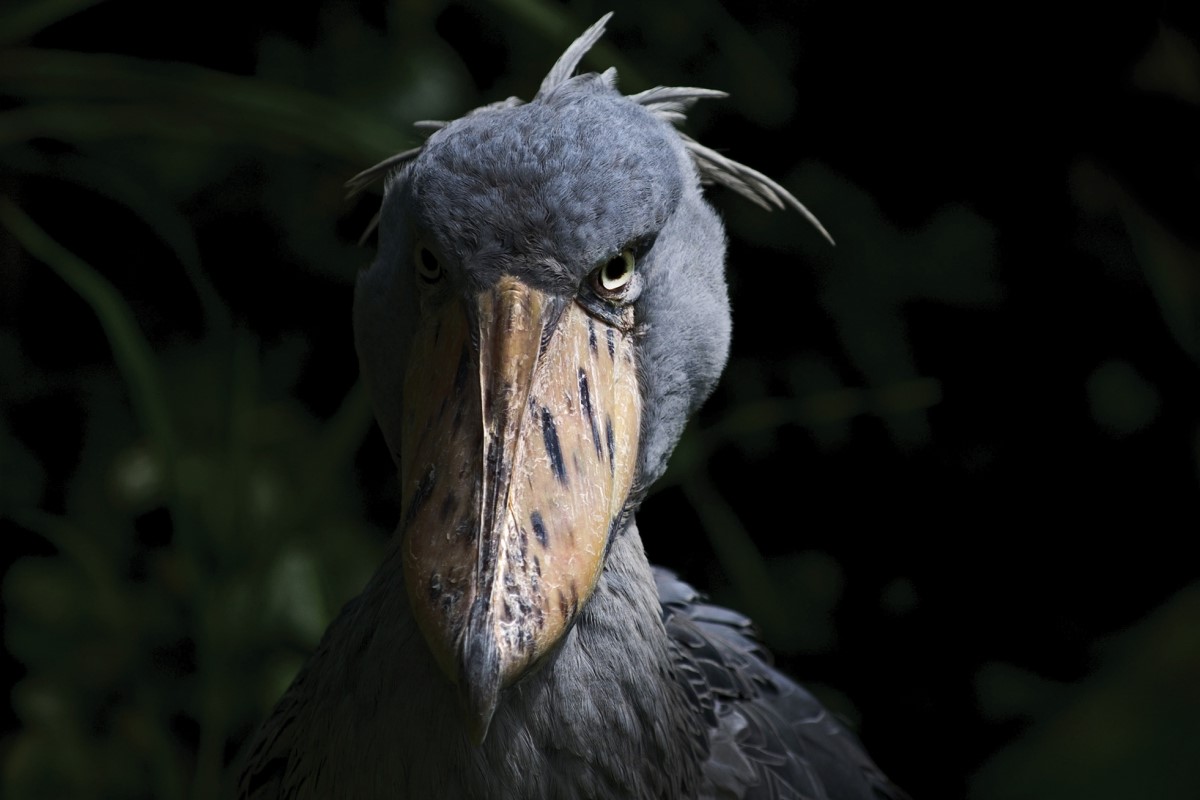
Have you ever wondered about the strange and fascinating world of the Shoebill Stork? This bird, with its massive shoe-shaped bill and piercing stare, is one of nature's most unique creatures. Found primarily in the swamps of East Africa, the Shoebill Stork is a master hunter, often standing motionless for hours before striking its prey. Despite its fearsome appearance, this bird is surprisingly gentle and solitary. Did you know that the Shoebill Stork can grow up to five feet tall? Its wingspan can reach over eight feet, making it an impressive sight in the wild. Join us as we dive into 37 intriguing facts about this remarkable bird, from its diet to its unusual nesting habits.
Key Takeaways:
- The shoebill stork is a fascinating bird with a unique appearance, including a massive, shoe-shaped bill and piercing yellow eyes. It's a skilled hunter, using its bill to catch fish and other prey in its swampy habitat.
- Shoebill storks face threats from habitat destruction and illegal hunting, leading to their vulnerable status. Conservation efforts, including habitat preservation and ecotourism, are crucial for protecting these extraordinary birds.
Shoebill Stork: A Bird Like No Other
The shoebill stork is one of the most fascinating birds on the planet. Known for its unique appearance and intriguing behaviors, this bird captivates bird watchers and scientists alike. Let's dive into some amazing facts about this extraordinary creature.
Unique Appearance
The shoebill stork's look is unlike any other bird. Its distinctive features make it stand out in the avian world.
- The shoebill stork gets its name from its massive, shoe-shaped bill. This bill can be up to 24 centimeters long and 20 centimeters wide.
- Its bill is not just for show; it helps the bird catch large prey like fish, frogs, and even small crocodiles.
- Shoebill storks have a wingspan that can reach up to 2.5 meters, making them impressive fliers despite their bulky appearance.
- Their feathers are primarily gray, which helps them blend into their swampy habitats.
- The shoebill's eyes are piercing yellow, giving it a somewhat eerie, yet captivating look.
Habitat and Distribution
Shoebill storks are native to Africa, where they inhabit specific types of environments.
- These birds are primarily found in the swamps and marshes of central tropical Africa, including countries like Uganda, Sudan, and Zambia.
- They prefer habitats with dense vegetation and shallow waters, which provide ample hunting grounds.
- Shoebill storks are often found in areas with papyrus and reed beds, which offer both food and shelter.
- They are solitary birds, usually seen alone or in pairs rather than in flocks.
- The shoebill stork's habitat is under threat due to human activities like agriculture and urban development.
Diet and Hunting Techniques
Shoebill storks are skilled hunters with unique methods for catching their prey.
- Their diet mainly consists of fish, particularly lungfish and catfish, which are abundant in their swampy habitats.
- Shoebill storks are known for their "stand and wait" hunting technique, where they remain motionless for long periods before striking.
- They use their powerful bills to catch and crush their prey, ensuring a quick kill.
- Shoebill storks can also eat amphibians, reptiles, and even small mammals when fish are scarce.
- They have been observed using their bills to sift through mud and water to find hidden prey.
Reproduction and Lifespan
Understanding the reproductive habits of shoebill storks provides insight into their life cycle and survival.
- Shoebill storks typically build their nests on floating vegetation or small islands in swamps.
- They lay one to three eggs per breeding season, but usually, only one chick survives to adulthood.
- Both parents take turns incubating the eggs and feeding the chick once it hatches.
- Shoebill stork chicks are known to be aggressive towards each other, often leading to siblicide.
- These birds have a relatively long lifespan, living up to 35 years in the wild.
Behavior and Social Structure
Shoebill storks exhibit fascinating behaviors that set them apart from other bird species.
- They are generally silent birds but can produce a variety of sounds, including bill clattering and mooing calls.
- Shoebill storks are known for their slow, deliberate movements, which help them remain undetected by prey.
- They are territorial birds, often defending their hunting grounds from other shoebills.
- Shoebill storks have been observed sunbathing with their wings spread wide to regulate their body temperature.
- Despite their solitary nature, shoebill storks may form loose associations during the breeding season.
Conservation Status
The shoebill stork faces several threats that have led to its vulnerable status.
- Habitat destruction due to agriculture, urbanization, and climate change is a significant threat to shoebill stork populations.
- Illegal hunting and capture for the pet trade also pose risks to these birds.
- Conservation efforts are underway to protect shoebill storks, including habitat preservation and anti-poaching measures.
- Shoebill storks are listed as vulnerable on the IUCN Red List, highlighting the need for continued conservation efforts.
- Ecotourism has become a valuable tool in raising awareness and funds for shoebill stork conservation.
Interesting Tidbits
Here are some additional fascinating facts about the shoebill stork that you might find intriguing.
- Shoebill storks are sometimes called "whale-headed storks" due to their large, whale-like bills.
- They have a prehistoric appearance, often compared to pterodactyls and other ancient creatures.
- Shoebill storks have been featured in various documentaries and nature programs, showcasing their unique behaviors and habitats.
- They are considered a symbol of good luck in some African cultures.
- Shoebill storks have a slow metabolism, which allows them to go for long periods without food.
- They are excellent swimmers, using their large feet to paddle through the water.
- Shoebill storks have a unique way of cooling down; they defecate on their legs to help regulate their body temperature.
The Shoebill Stork: A Marvel of Nature
The shoebill stork stands out as one of nature's most fascinating creatures. With its prehistoric look, massive bill, and unique hunting style, it captures the imagination of bird enthusiasts and casual observers alike. Found primarily in the swamps of East Africa, this bird's patience and precision in hunting are unmatched. Its ability to stand still for hours, waiting for the perfect moment to strike, showcases its incredible adaptation to its environment.
Despite its somewhat intimidating appearance, the shoebill stork plays a crucial role in its ecosystem, helping to maintain the balance of aquatic life. Conservation efforts are vital to ensure this remarkable bird continues to thrive in the wild. Next time you think about unique wildlife, remember the shoebill stork—a true marvel of nature.
Frequently Asked Questions
Was this page helpful?
Our commitment to delivering trustworthy and engaging content is at the heart of what we do. Each fact on our site is contributed by real users like you, bringing a wealth of diverse insights and information. To ensure the highest standards of accuracy and reliability, our dedicated editors meticulously review each submission. This process guarantees that the facts we share are not only fascinating but also credible. Trust in our commitment to quality and authenticity as you explore and learn with us.


